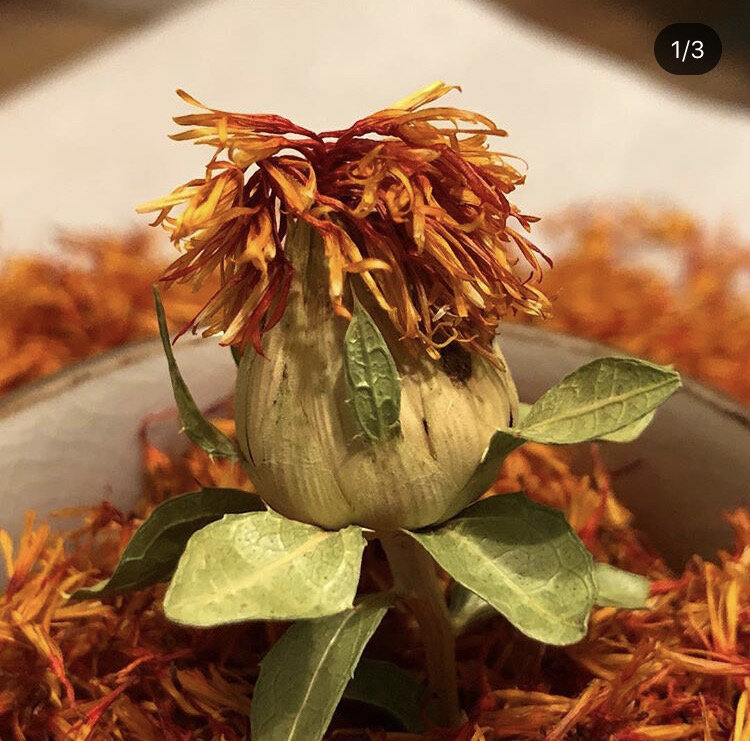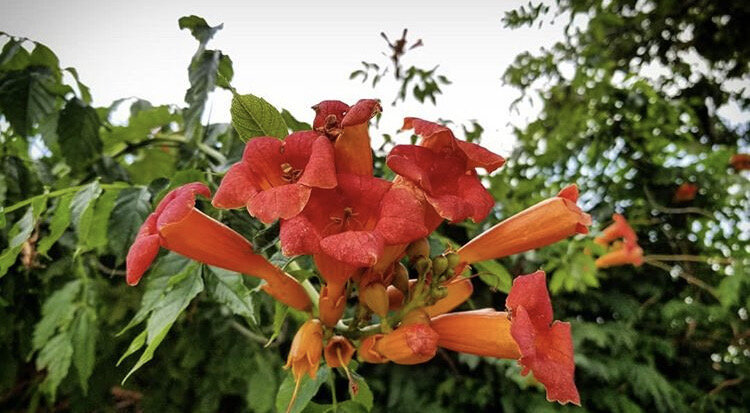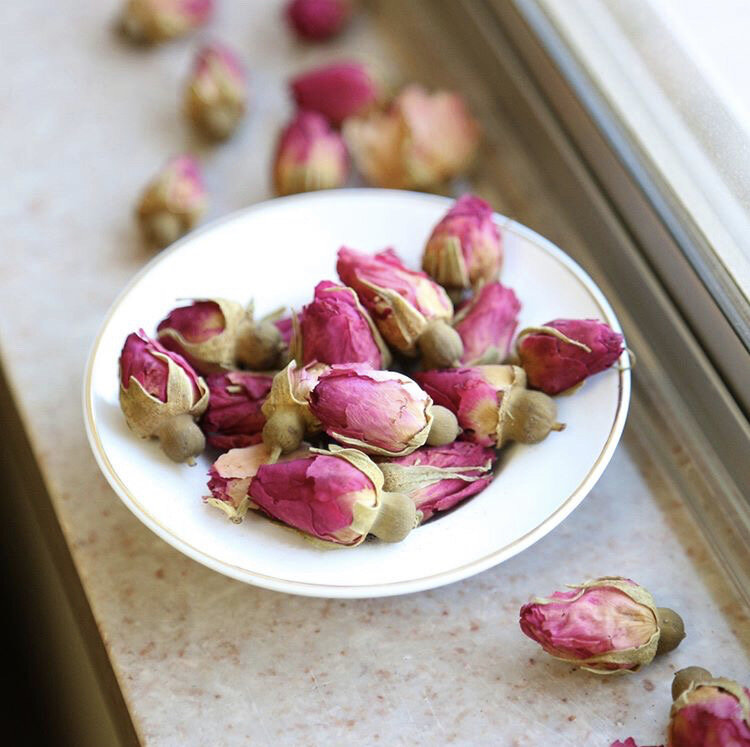The Five Flowers of Chinese Herbal Medicine
Beautiful and powerful medicine, many flowers are used in the TCM treatment of skin diseases because flowers are said to effect the upper and the outer of the body. By their doctrine of signatures, flowers, with their delicate petals and temporal nature, are generally light in nature and rise to the upper and outer reaches of the body. Flowers are often used to open the sinuses, clear eye issues, and generally affect the orifices of the head. They also effect the outermost layers of the body, specifically the skin. Some flowers are used to clear heat and inflammation from the skin by venting rashes from the surface, and others to cool the blood and circulate blood to clear inflammation.
Ju Hua, Chrysanthemum flowers captured by Heilbron Herbs; pictured below, left to right, safflower photo by Wheel Herbs, campsis flower vine, dried rose buds by Mayway Herbs, and a botanical drawing of celosia flowers.
One famous combination of flowers often added into larger formulas is called the Cool the blood with Five Flowers decoction. This prescription contains five of the most important and commonly used flowers in TCM dermatology. The five flowers in this formula are chrysanthemum flower (ju hua), campuses flower (ling Xiao hua), celosia flower (ji guan hua), safflower (hong hua), and, the much beloved, rose bud (mei gui Hua). This combination of flowers together can clear heat and cool the blood, especially clearing heat from the face and the skin in diseases such as rosacea, acne, and peri oral dermatitis.
Each flower brings it’s own specific medicine to the formulation. Safflower, or hong hua, is used primarily to circulate the blood when it has become stuck. It’s commonly used in formulas for post-adolescent female acne and rosacea where there are obvious signs of blood stagnation like purplish colored lesions or varicose veins.
Celosia flower, or ji guan hua, also clears heat and cools the blood, but it has the added ability to stop bleeding. It’s commonly paired with campsis flower in formulas for rosacea where broken blood vessels become visible on the cheeks and nose. It can also be used in formulas for intestinal and rectal bleeding in cases of colitis, inflammatory bowel disease and hemorrhoids.
Campsis flower, or ling xiao hua, is famously used for clearing lurking heat from the body. In TCM there is a concept of “hidden heat” or lingering heat that features quite prominently in inflammatory skin diseases. Campsis flower, is used to treat papular lesions such as those seen in personal dermatitis and certain types of acne.
Wild chrysanthemum flower, or ye ju hua, excels at clearing toxic heat from the body because it is antibacterial, antiviral, and anti inflammatory. According to TCM, it clears wind, heat, and toxins and can disperse swelling or fluid in the face. In dermatology it is used in the treatment of impetigo, seborrheic dermatitis, scalp psoriasis, certain types of eczema, and certain patterns of acne.
The last of the five flowers is rose, or mei gui hua. Rose buds are often added when the digestion is effected and someone feels tension in the chest and stomach. Roses are great when there is an emotional component to skin disease because roses move stagnant qi allowing us to take a deeper breath and ground into our bodies when anger, frustration or other strong emotions take hold.
I hope this offers a little insight into some of the herbs you may see in your Chinese herbal formulas. All of these medicinals are most effective when used in the proper combinations and at the proper doses, so check in with your acupuncturist or herbalist to find out more about what your system needs based on your TCM pattern before self-prescribing. If you have any questions, or want to find out more about how Chinese medicine can help treat chronic skin disease contact Allison at allison@nineflowersacupuncture.com.





